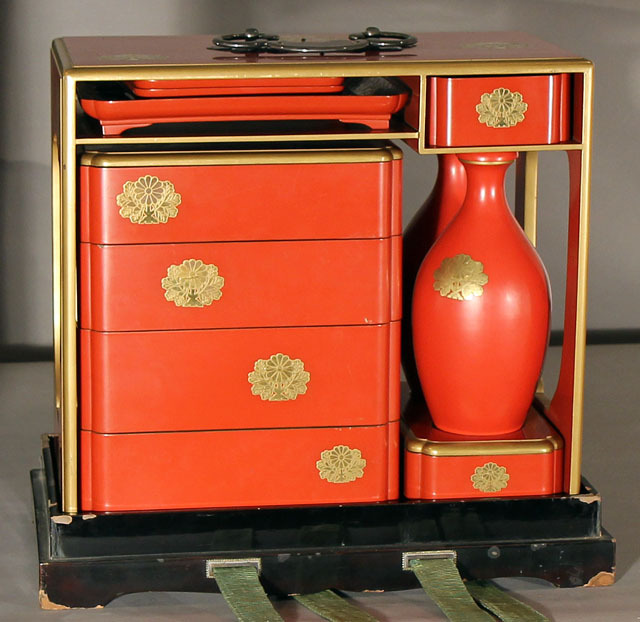Elevated Eating : Japanese Sage-Jubako
Sage-jubako, or lacquer picnic boxes were used traditionally in Japan for the transportation of meals on special occasions such as outings to temples or festivals. The four-tiered jubako, or nesting containers, were filled with food, while the tokkuri bottles were filled with sake. But picnic boxes were meant for much more than just transportation of a meal; contents were arranged painstakingly and artfully, and packed tightly so as to portray abundance and demonstrate great care. Popular contents varied depending on the time of year but might include vegetables, eggs, rice and raw fish. While the prosperous Edo period saw a remarkable gap in the diets between the rich and the poor, even common people occasionally used sage-jubako to experience the preparation and enjoyment of foods. Highly decorated and more extravagant objects such as this, however, were indicators of social status, and likely belonged to a daimyo, or provincial lord. Daimyo would employ a special bearer to carry the picnic box when attending Hanami, the Japanese tradition of viewing the cherry blossoms.

